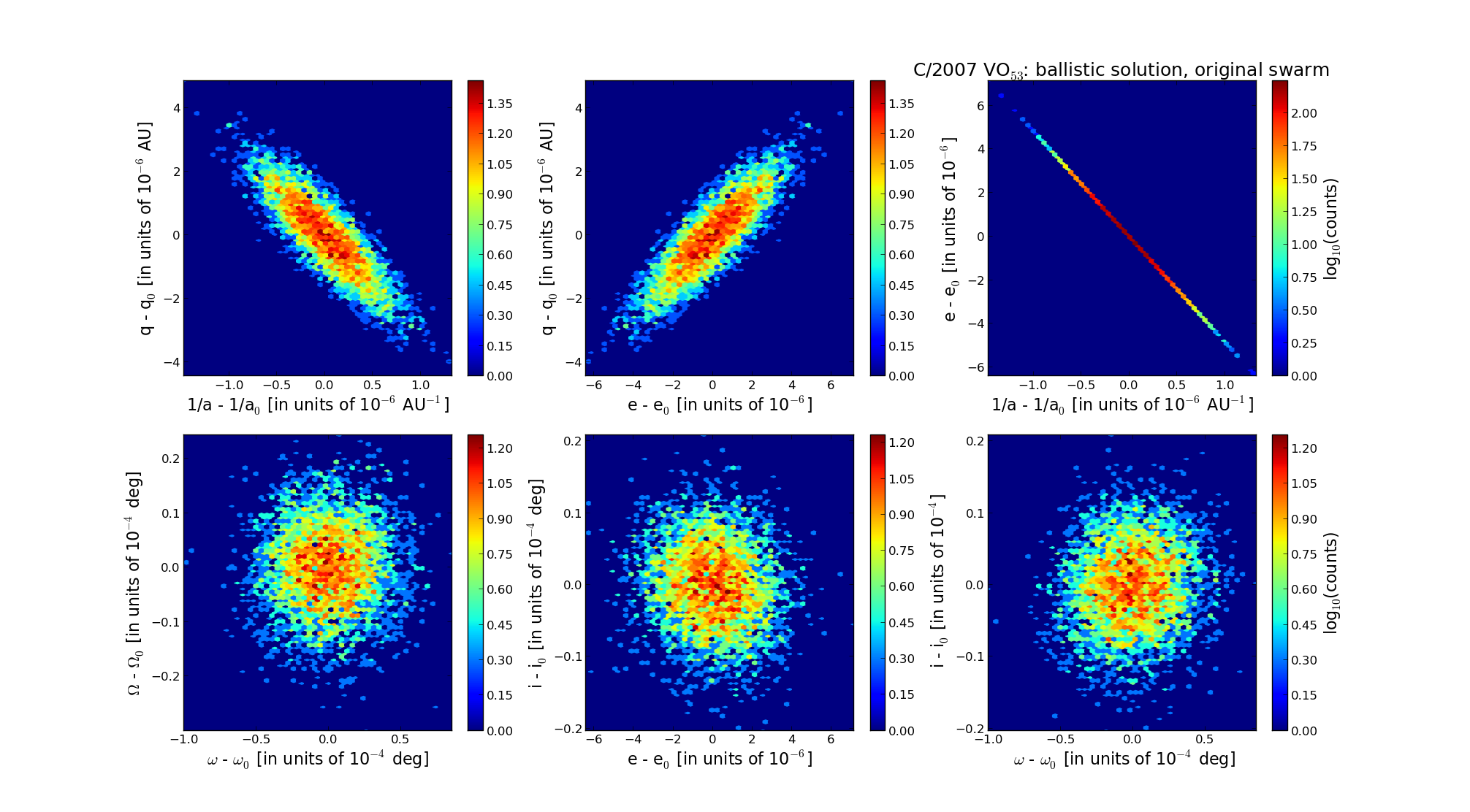| Solar System Dynamics & Planetology Group |
 |
C/2007 VO53 Spacewatch |  |
| Solar System Dynamics & Planetology Group |
 |
C/2007 VO53 Spacewatch |  |
| number of observations | 712 |
| number of residuals | 1396 |
| data interval | 2007 Oct. 20 — 2012 July 20 |
| rms [arcsec] | 0.43 |
| orbit quality class | 1a+ |
| Epoch (TT) | 20100504.0 | = JD 2455320.5 |
| time of perihelion passage (TT) | 20100426.499302 | ± 0.000198 |
| perihelion distance | 4.84262750 | ± 0.00000113 |
| eccentricity | 0.99972382 | ± 0.00000169 |
| argument of perihelion [deg] | 75.029920 | ± 0.000023 |
| longitude of the ascending node [deg] | 59.736874 | ± 0.000007 |
| inclination [deg] | 86.990322 | ± 0.000006 |
| inverse semimajor axis [10-6 au-1] | 57.03 | ± 0.35 |

| Epoch (TT) | 17040508 | |
| time of perihelion passage (TT) | 20100426.227350 | ± 0.000199 |
| perihelion distance | 4.84064308 | ± 0.00000115 |
| eccentricity | 0.99955267 | ± 0.00000172 |
| argument of perihelion [deg] | 75.075823 | ± 0.000023 |
| longitude of the ascending node [deg] | 59.767764 | ± 0.000007 |
| inclination [deg] | 86.965774 | ± 0.000005 |
| inverse semimajor axis [10-6 au-1] | 92.41 | ± 0.36 |
| Epoch (TT) | 23160719 | |
| time of perihelion passage (TT) | 20100425.734230 | ± 0.000202 |
| perihelion distance | 4.84554239 | ± 0.00000117 |
| eccentricity | 0.99941804 | ± 0.00000173 |
| argument of perihelion [deg] | 75.037730 | ± 0.000023 |
| longitude of the ascending node [deg] | 59.726727 | ± 0.000007 |
| inclination [deg] | 86.999341 | ± 0.000006 |
| inverse semimajor axis [10-6 au-1] | 120.10 | ± 0.36 |